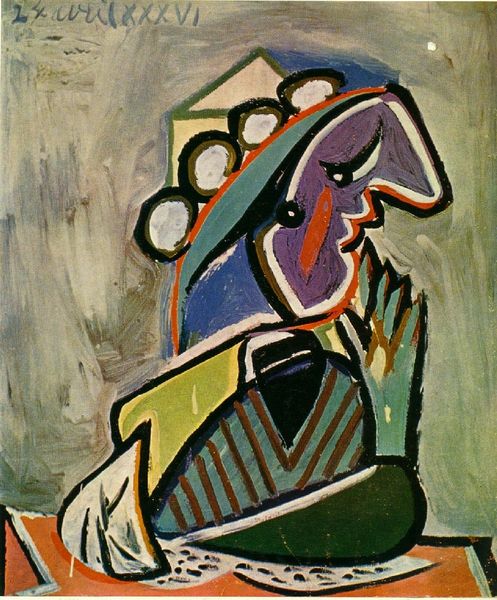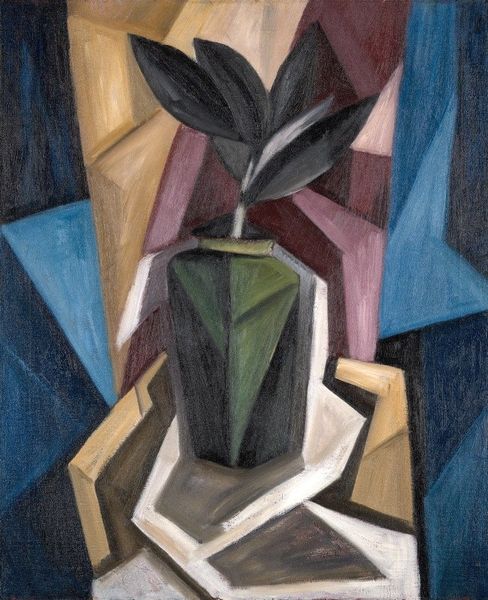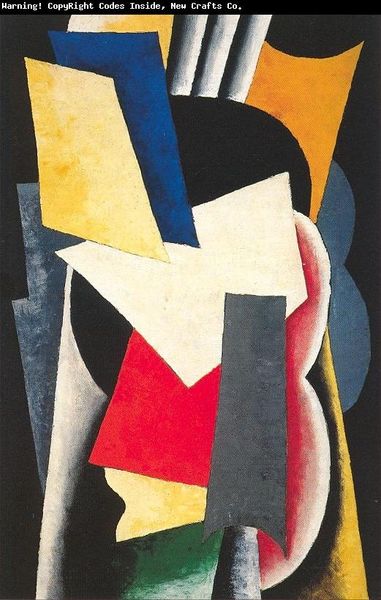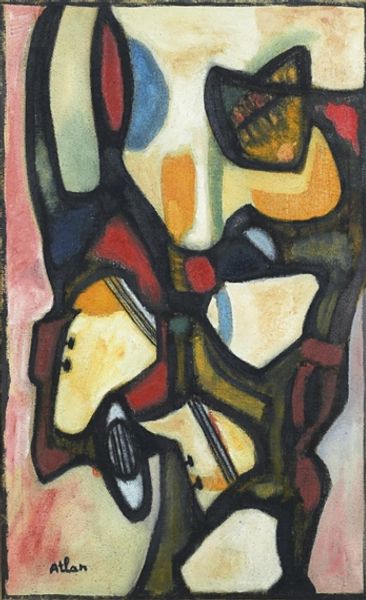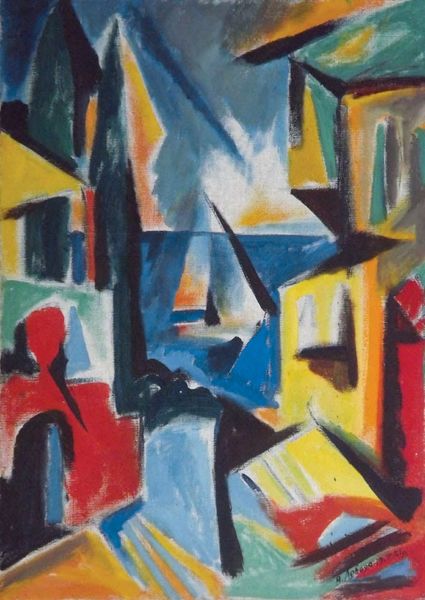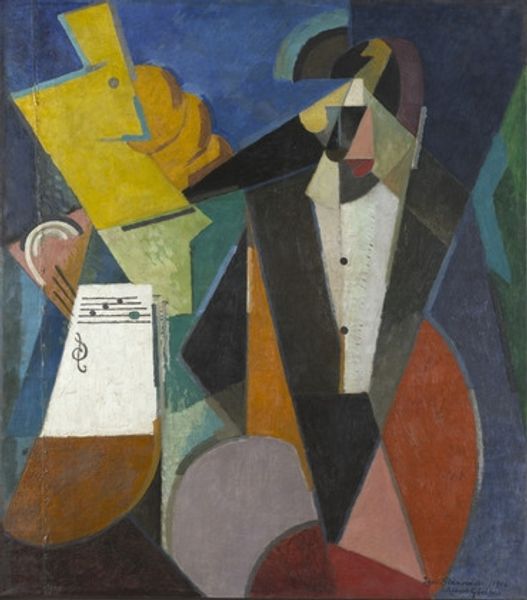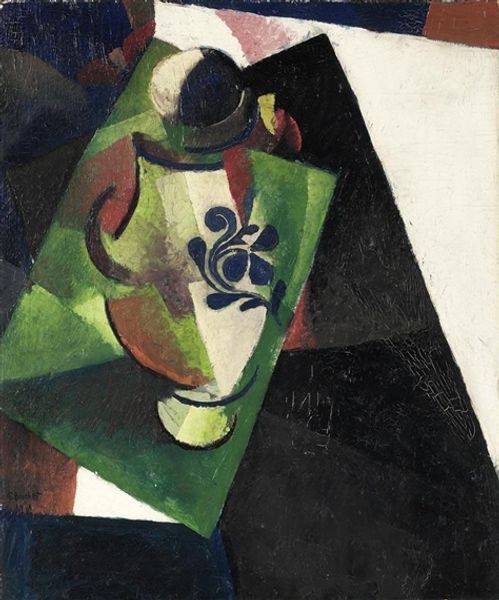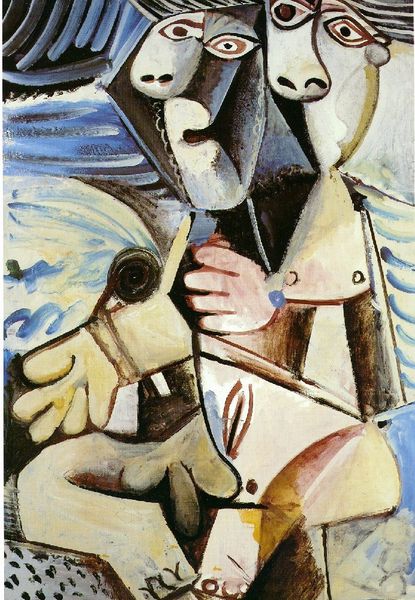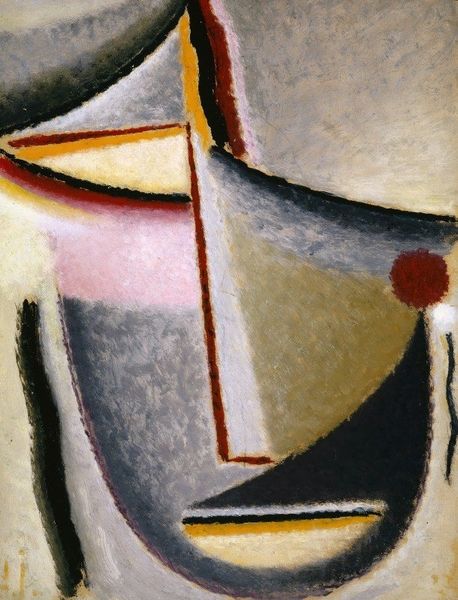
painting, oil-paint
#
portrait
#
cubism
#
painting
#
oil-paint
#
oil painting
#
portrait art
Copyright: Public domain US
Editor: So, we have Alberto Magnelli’s “Man Smoking,” created in 1914 using oil paint. I'm struck by how fragmented the figure is, almost like a shattered mirror reflecting modern life. How would you interpret this work through a historical lens? Curator: Given the date, 1914, we're on the cusp of tremendous social upheaval with the start of World War One. Cubism, which profoundly informs this piece, emerged in a time of technological advancement, shifting social structures, and new modes of perception. The fragmentation you noted embodies this disruption. How do you think that disruption might be reflected in the choice of subject matter? Editor: Well, a "Man Smoking" seems almost…mundane, especially against the backdrop of potential war. Perhaps Magnelli is juxtaposing the ordinary with the extraordinary, revealing a tension in everyday life? Curator: Precisely. Think about who traditionally gets to relax and contemplate over a pipe. There's a certain class association. But now, consider the emerging artistic circles challenging bourgeois values, advocating for social change. Do you think this painting subtly critiques that established order by presenting this familiar figure through a deconstructed lens? Editor: That’s interesting! It's as if he’s dismantling the very image of the leisurely gentleman, showing cracks in that societal facade. The broken planes feel almost violent in their suggestion. Curator: Absolutely. And the use of oil paint itself has a history, often associated with portraiture and tradition. By adopting this medium but subverting its representational capabilities, Magnelli perhaps aimed to disrupt not only visual conventions but also the broader art establishment of the time. Does seeing it this way change your perception of the artwork? Editor: Definitely. I initially focused on the formal aspects of Cubism, but now I understand the potential for social commentary within that style. The choice of subject and medium become crucial to that interpretation. Curator: Precisely. It's about understanding art's place within the larger cultural conversation.
Comments
No comments
Be the first to comment and join the conversation on the ultimate creative platform.

